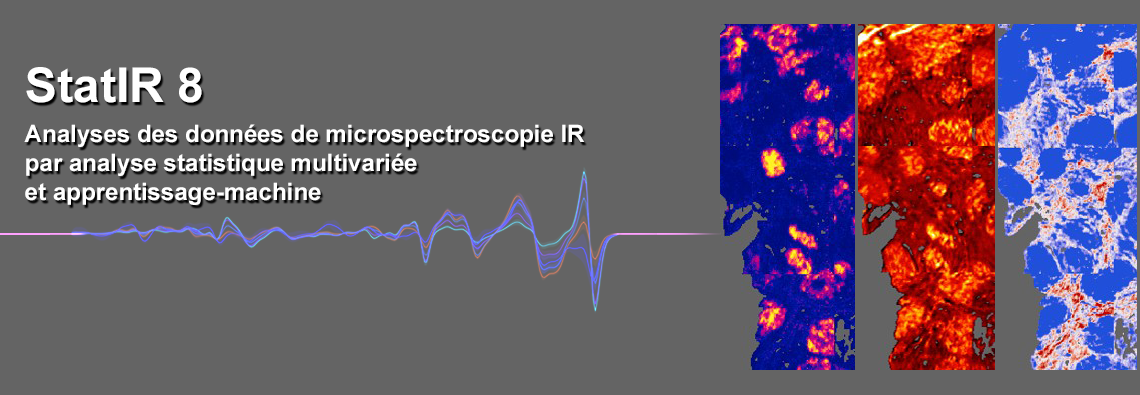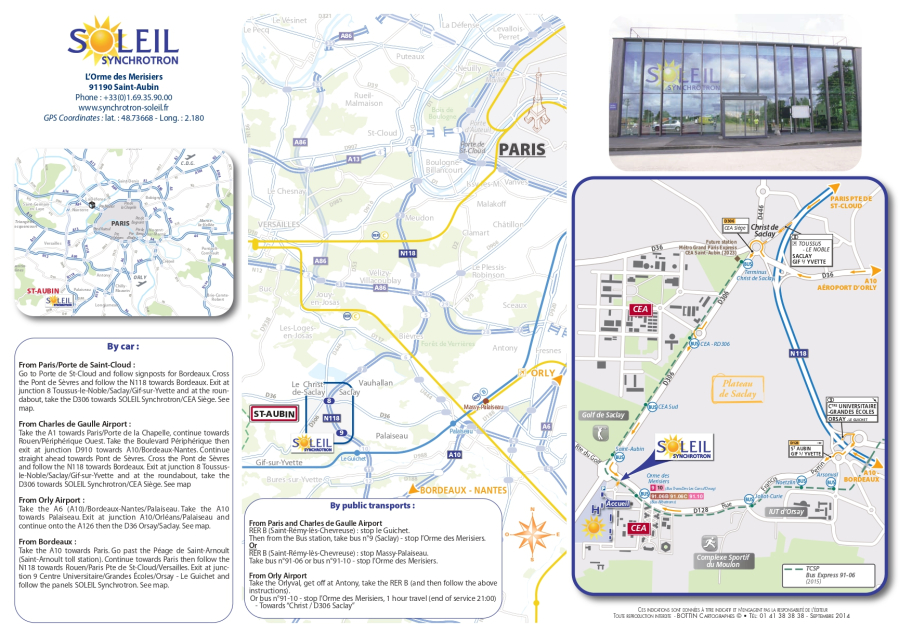
The SMIS beamline at the SOLEIL synchrotron is pleased to announce the 8th edition of its training workshop, STAT-IR 8, focused on multivariate and machine learning analysis of infrared microspectroscopy data. The three-day course will take place from Wednesday, June 18th to Friday, June 20th, 2025, at the SOLEIL synchrotron and will be conducted in English.
The workshop aims to provide participants with hands-on experience on the use of Multivariate Analysis (MVA) techniques such as PCA, and Machine Learning (ML) methods including both unsupervised and supervised clustering approaches for infrared microspectroscopy data analysis. The course will also cover spectral preprocessing techniques used in preparation for MVA and ML. Additionally, the course will cover the use of these techniques in analyzing hyperspectral images and maps, with a particular focus on biomedical datasets,The training program will emphasize on biomedical datasets, though the methodologies are equally applicable to data from cultural heritage and polymer sciences. These techniques can also be extended to data obtained from Raman microspectroscopy and X-ray fluorescence.
Infrared microspectroscopy and imaging provide essential insights into the chemical composition, spatial organization, and molecular conformation of complex materials with spatial resolutions ranging from microns to submicron. Efficient data analysis is key to unlocking the rich information embedded in infrared spectra, especially when dealing with large datasets comprising tens to hundreds of thousands of spectra. This requires the use of automated techniques to effectively extract meaningful information.
One of the most effective approaches to handling large datasets is statistical analysis which can reveal spectral variability, identify correlations, classify data objectively, train identification algorithms, integrate data from multiple techniques, and establish predictive models for quantification.
The success of these methods hinges on the application of appropriate spectral preprocessing to eliminate artifacts and confusing variations. Mastery of these specialized software tools and techniques requires dedicated training in signal processing that will be taught during the workshop.
The SMIS beamline at the SOLEIL Synchrotron, located near Paris, has over 15 years of expertise in the measurement and analysis of microspectroscopy data. This course will be led by:
Ferenc Borondics, expert in physical chemistry,
Marko Toplak, machine learning specialist and one of the developers of Quasar software,
Christophe Sandt, biospectroscopy expert.
The course will utilize the open-source software Quasar, and participants will have the opportunity for hands-on practice with their own data.
The workshop will take place on-site at the SOLEIL synchrotron and is open to all past and future users of the SMIS beamline.
PRELIMINARY PROGRAMM
| Wednesday, June 18 |
Thursday, June 19 Supervised learning |
Friday, June 20 Unsupervised learning |
||
| Session 1 | 9:00 |
Getting started with Quasar (installation, basic Orange and Quasar functionality) Speaker: C Sandt, M Toplak |
Introduction to supervised and unsupervised learning Speaker: C Sandt |
Quantification Speaker: C Sandt |
| Break | 10:30 | |||
| Session 2 | 10:45 |
Spectral Preprocessing Visualization – mapping and imaging, univariate analysis Speaker: C. Sandt |
Supervised analysis. Classification of spectra and hyperspectral datasets using various methods Speaker: F Borondics |
Unsupervised analysis. Clustering of spectra and hyperspectral datasets using various methods |
| Lunch break | 12:00-13:30 | |||
| Session 3 | 13:30 |
Statistical data exploration PCA, PCA visualization PCA imaging Speaker: C Sandt |
Model inspection and cross-validation Speaker: M Toplak |
Image Analysis
Speaker: ?? |
| Break | 15:30 | |||
| Session 4 | 16:00 |
Hands-on work with participants' data |
Hands-on work with participants' data |
|
| 17:30 |
The registration is open, click here.
Registration fees: 110 €
Payment
By bank transfer
By order form
By credit card
Payment by bank transfer
Thank you for transmitting your payment by bank transfer to the following account number: BNP Paris Bas International Bank Account Number (IBAN): FR76 3000 4006 8400 0100 8245 430 Bank Identification Code (BIC): BNPAFRPPIFO Synchrotron SOLEIL With mentionning your name and the event reference: StatIR 8 / AG69240607. Your registration will be definitive as soon as your payment will be received.
Payment by order form only for Public organism
For public organism the order form is MANDATORY. Please send it to the following address: conf-statir8-2025@synchrotron-soleil.fr. Please indicate the name(s) of the participant(s), the service code Chorus Pro and the reference: StatIR 8 / AG 69240607.
Payment by credit card
A payment online is possible. You just have to select this mode of payment when registrating and to follow instructions.
Venue information

If you come by car:
Geographic Address:
Synchrotron SOLEIL
l'Orme des Merisiers
Départementale 128
91190 Saint Aubin
GPS coordinates:
Latitude: 48.711922
Longitude: 2.146156
at the intersection of RD306 and D128
If you come by public transport:
From PARIS and CHARLES-DE-GAULLE airport
RER B direction SAINT-RÉMY-LÈS-CHEVREUSE until:
the station "MASSY-PALAISEAU" then BUS no. 91-06 B or C direction SAINT-QUENTIN GARE, stop "L'ORME DES MERISIERS".
Timetable bus 91-06
the station "LE GUICHET" then join the bus station, take bus no. 9, direction SACLAY, stop "L'ORME DES MERISIERS".
Timetable bus 9
station "GIF SUR YVETTE", take bus no. 10, stop SAINT AUBIN
Timetable bus 10
From Orly Airport, take the ORLYVAL, get off at ANTONY, take the RER B (see above) or take the BUS n°91-10 direction "Christ / N
Timetable RER B
Accommodation
To book your accommodation at SOLEIL please contact directly: hebergement@synchrotron-soleil.fr / Overnight: 50 €
For further information please contact: Conf-statir8-2025@synchrotron-soleil.fr
